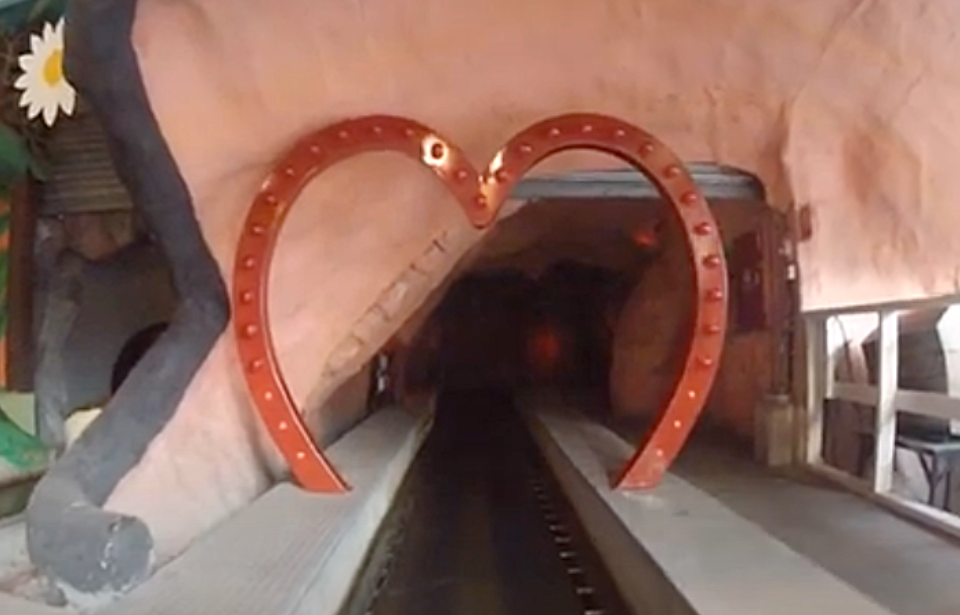The Tunnel of Love ride has a fascinating history full of of forbidden romance. It first gained popularity in the early 20th century as an attraction in newly introduced amusement parks. With its dimly lit waterways, the ride became a popular destination for young couples looking for a romantic escape. However, the ride’s popularity declined in the latter half of the 20th century, and today, few remain in operation.
The rise of the amusement park
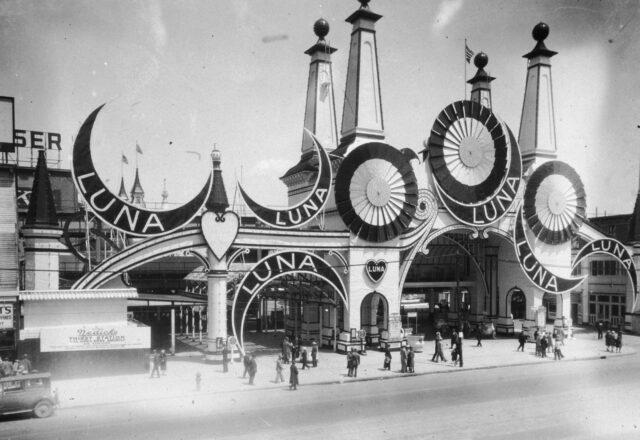
The origins of amusement parks in America can be traced back to the mid-19th century, when attractions such as Tivoli Gardens in Copenhagen, Denmark, and Vauxhall Gardens in London, England became popular attractions. People in the United States heard about these new amusement parks opening in Europe and took the opportunity to create their own.
Early rides at these amusement parks included the Ferris wheel, introduced at the World’s Columbian Exposition in Chicago in 1893, as well as carousels and bumper cars. One of the most iconic rides of the era was the Tunnel of Love.
The birth of the Tunnel of Love
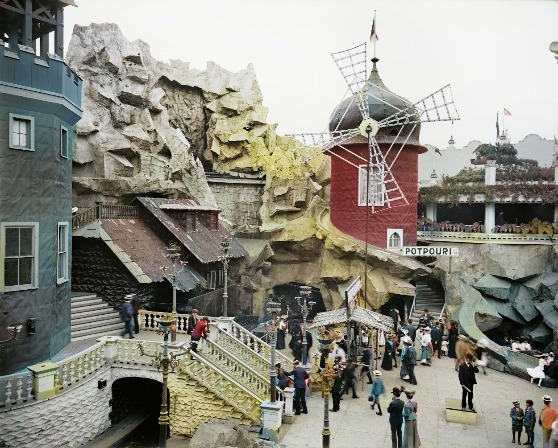
The Tunnel of Love is said to have originated from an earlier attraction called the Old Mill ride. The Old Mill was introduced in the late 1800s and featured a guided boat ride through a dark tunnel, averaging about six minutes long.
It was soon discovered that couples were using their ride on the Old Mill as an opportunity for some alone time, as they were able to get intimate with one another in private. During this period, young couples still had to be chaperoned while on their dates, and the Old Mill ride served as an escape for romance.
Eventually, the ride was transformed to cater to visitors’ romantic needs. A Tunnel of Love ride debuted at Coney Island in 1907, modeled after the Old Mill. However, the Tunnel of Love did away with the fake rocks and mythical creatures often found in its predecessors and replaced them with artificial flowers, fountains, and painted scenery.
Romance in the Tunnel of Love
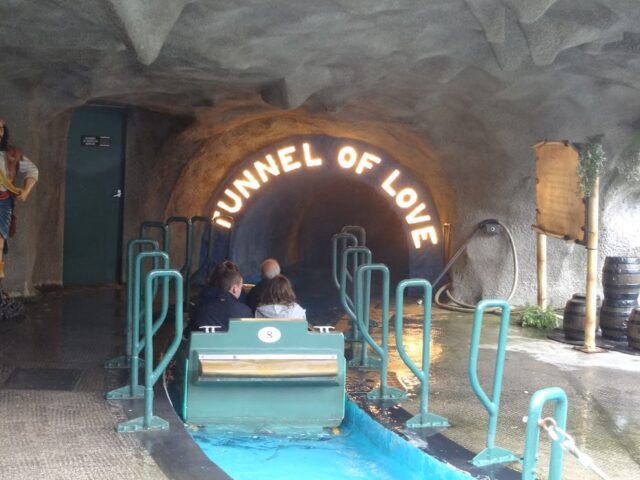
To enhance the romantic atmosphere of the Tunnel of Love, many operators themed the ride as a haunted house, of all things. The scary setting was designed to encourage couples to cuddle up and hold each other close as they floated through the darkened tunnel, awaiting startles and scares.
In 1950, The Daily News reported, “Research has shown that the snarls, howls, and groans of the hideous sights along the way, while palpably phony, will cause the female to precipitate herself into the male’s arms. Her fright is usually as phony as the hazards of the course, but it serves a useful purpose.”
To prevent couples from getting too intimate while riding the Tunnel of Love, some ride operators employed guards to patrol the catwalks above the river. These guards would use plastic bats to separate couples before they engaged in too much promiscuous behavior. They would often smack the buttocks of couples who were taking their romance a little too far.
The end of an era
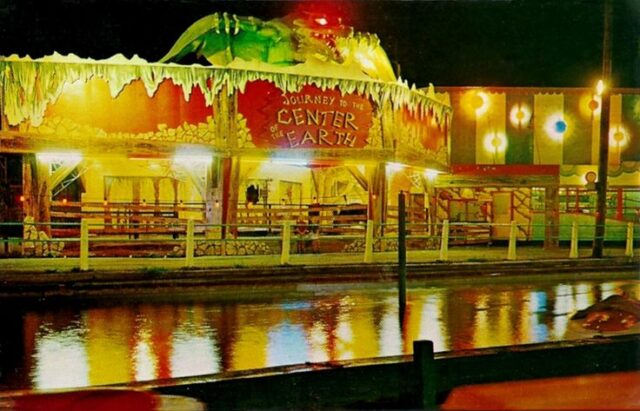
After a short period of popularity, the demise of the Tunnel of Love ride in America began in the 1960s. As the sexual revolution helped to liberate young couples from their chaperoned dates and allowed them to express romantic gestures more publicly, there was no longer a demand for a ride that helped them hide their romances.
Additionally, as amusement parks grew in size and popularity, they began to focus more on thrilling roller coaster rides and attractions that could appeal to a wider audience. The Tunnel of Love, with its slow pace and romantic theme, began to seem outdated and unappealing to younger generations.
Some amusement parks tried to renovate the ride to appeal to more modern audiences in order to keep them running, but most were either demolished or fell into disrepair as their popularity waned. As a result, the ride gradually disappeared from the American amusement park landscape. Today, only a handful of Tunnel of Love rides remain in operation, and they are often viewed as nostalgic relics of a bygone era. Despite their dwindling numbers, these rides continue to attract visitors who are drawn to their unique atmosphere and romantic charm.
The Tunnel of Love in pop culture
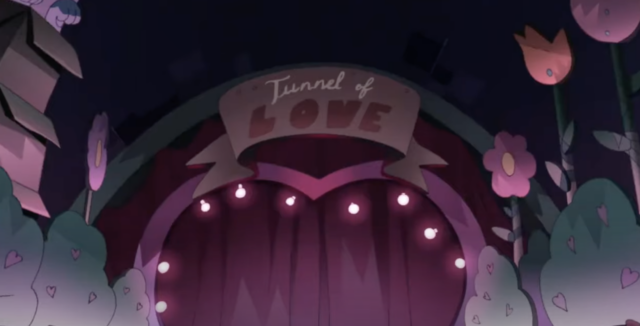
The Tunnel of Love ride has become a cherished theme in American pop culture. It has been immortalized in music thanks to Bruce Springsteen’s 1987 hit, “Tunnel of Love.” The song tells the story of a relationship that begins on the Tunnel of Love and ultimately ends in heartbreak. The Tunnel of Love has also made appearances in a number of television shows and movies, with a 1958 romantic comedy starring Gene Kelly even using the name of the ride as its title. More recent appearances of the Tunnel of Love were on The Simpsons, Scooby-doo, and The Owl House.
More from us: The Beloved Disney Rides That Fans Miss the Most
The legacy of the Tunnel of Love lives on. Although the physical ride has almost completely disappeared from amusement parks, it still remains a significant symbol in American pop culture.
